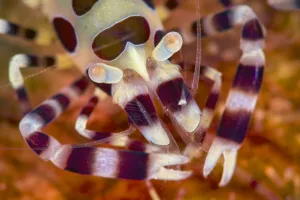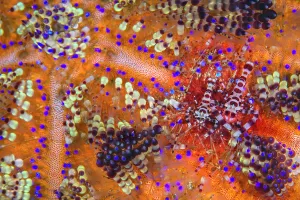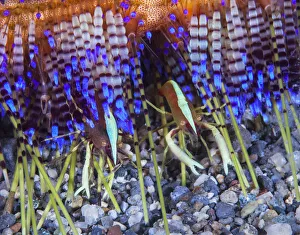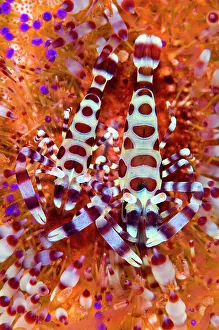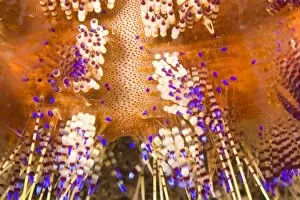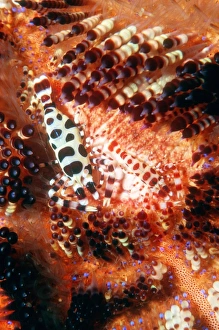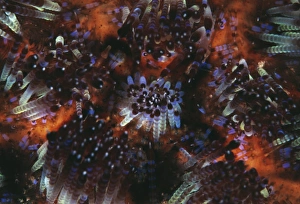Asthenosoma Varium Collection
In the vibrant waters of Southeast Asia, a fascinating relationship unfolds between the fire urchin (Asthenosoma varium) and its tiny inhabitants
All Professionally Made to Order for Quick Shipping
In the vibrant waters of Southeast Asia, a fascinating relationship unfolds between the fire urchin (Asthenosoma varium) and its tiny inhabitants. This venomous giant stands as one of the largest and most toxic urchins in existence, proudly displaying its warning colors to deter any potential predators. Amongst its spiky embrace, a pair of Coleman shrimps (Periclimenes colemani) have found their sanctuary. The female shrimp, larger than her male counterpart, gracefully navigates through the intricate network of venomous spines. Their symbiotic bond is evident as they make this fire urchin their home. A close-up view reveals the delicate beauty of these Coleman shrimps resting on their fiery abode. With meticulous precision, they maneuver around each spine with ease, showcasing their adaptability and resilience in such an inhospitable environment. But it's not just Coleman shrimps that seek refuge within this treacherous creature. Brooks urchin shrimp (Allopontonia brooki), another commensal species, also find solace among these dangerous spines. It seems that survival in these waters demands unconventional alliances. Journeying further into Southeast Asia brings us to Puerto Gallera in the Philippines where Asthenosoma varium thrives. Here we witness firsthand the striking toxicity exuded by this fire urchin - a reminder to all who dare approach its mesmerizing hues. Venturing even deeper into Indonesian waters near Ambon Island in Maluku Islands presents yet another encounter with Periclimenes colemani on Asthenosoma varium. These adult pairs demonstrate unity amidst adversity as they cling onto life together against all odds. Nature never ceases to amaze us with its intricacies; even parasitic marine snails find purpose within this ecosystem surrounding Asthenosoma varium. Each organism plays a vital role in maintaining balance and harmony beneath the waves.

